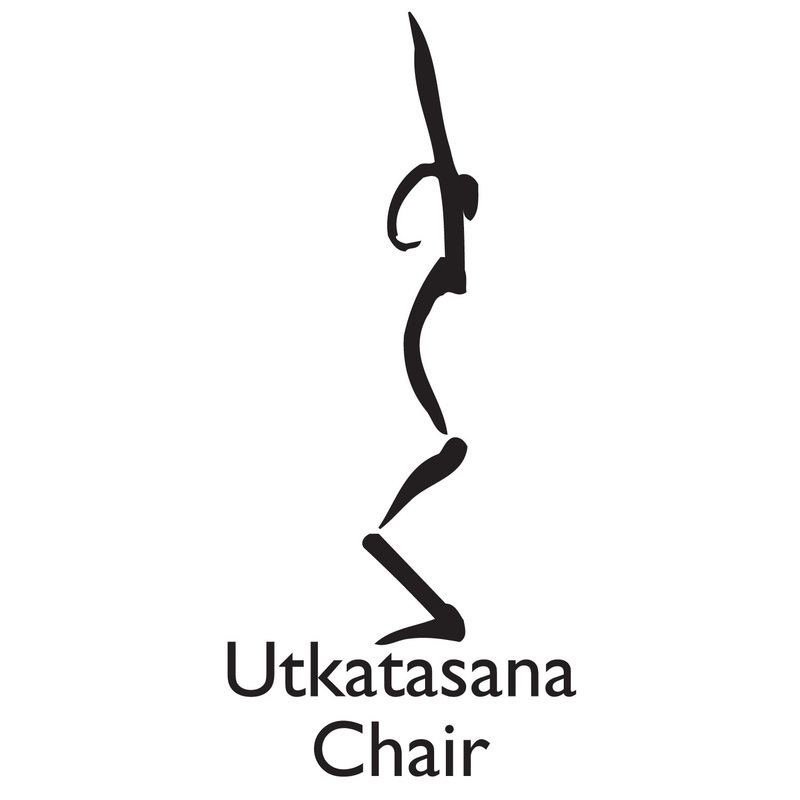|
Happy Wednesday, all! Here's your pose for the week, Utkatasana (Ewt-kah-tah-sah-nah), or chair pose. It's a staple of most yoga practices. As the name implies, the action is sitting down into an imaginary chair. Chairs, of course, are a symbol of comfort, rest, relaxation, and ease. And in this pose, we learn to balance ease with effort.
You may get so overwhelmed you shut down and say nothing. You may say "I don't know." You may leave the room in a panic. You may get angry at them for asking and go on a rant about something else. You may try to answer without making sense. You may feel awful about yourself. You may tell yourself you failed.
Or...before saying or doing anything else, you may remind yourself to breathe. You might take a deep breath and repeat the question to be sure you understand. You might breathe some more, and find that your shoulders relax. You might notice that your breath nurtures you, and the panic might subside. You might suggest further action to take. You might remind yourself that you are worthy, you are prepared, and that it's ok not to know all the answers. You might engage collaboratively with those around you to work toward a common goal. Utkatasana makes me think of business meetings and how terribly uncomfortable we can sometimes be in chairs! This pose allows us to practice becoming comfortable in an uncomfortable situation. Becoming and transforming are the important actions. Breathing with awareness is what transforms the situation, whether your situation is a tense meeting or is simply standing in Utkatasana. Physical Cues: Stand tall in mountain pose. Find strength in the belly by tucking the tail bone under. Slowly bend the knees, moving the tail bone down toward the floor. Keep tucking the tailbone, and engaging the belly. If you'd like, raise the arms above the head with the palms facing one another, while keeping the shoulders relaxed down away from the ears. If your shoulders are tense and uncomfortable, keep the hands at your chest, palms together. Sit as low as you can, while keeping the chest upright, with crown of the head and spine reaching toward the ceiling, rather than forward. Stay for as many breaths as you can breathe calmly. Then straighten the legs for a few breaths, maybe take a standing forward bend (last week's pose, Uttansana), and repeat if desired. Mental benefits: As I described above, Utkatasana offers us a reflection of how we handle static, tense, anxiety- provoking situations. When we are anxious but confined, like in that business meeting (or in traffic, in class, etc), panic can set in. When you practice Utkatasana, challenge yourself to stay in the pose to the point of discomfort just momentarily. Then, take note of your emotional reaction to your discomfort. Using the breath to manage that emotional reaction prepares you for life outside your yoga practice, off the mat. Your next business meeting or traffic jam is fertile ground to apply your breath and emotional awareness. Because yoga is so great for mental health, we sometimes use it in therapy at Flourish. Learn more on our yoga therapy page here. Namaste! Next week, let's talk about arguably the most widely known yoga pose, downward facing dog. In Sanskrit, it's Adho Mukha Svanasana (say that three times fast! :) Comments are closed.
|
AuthorKambria Kennedy-Dominguez, LPC-S |
Phone: 972.755.9120 | Fax: 214.723.5345
533 W. 12th Street Dallas, TX 75208
Privacy Policy Good Faith Estimate
©Flourish Counseling and Consultation PLLC 2024
533 W. 12th Street Dallas, TX 75208
Privacy Policy Good Faith Estimate
©Flourish Counseling and Consultation PLLC 2024


 RSS Feed
RSS Feed
